The people of Sri Lanka

A lasting memory of my trip to Sri Lanka is the warm welcome and beaming smiles of the people who live there. This fascinating country offers many interesting and unusual experiences all enhanced by interaction with the locals who offer them. On my last trip I enjoyed two very different village experiences, attended a dance workshop, meditated in a cave temple and explored a hotel vegetable garden.
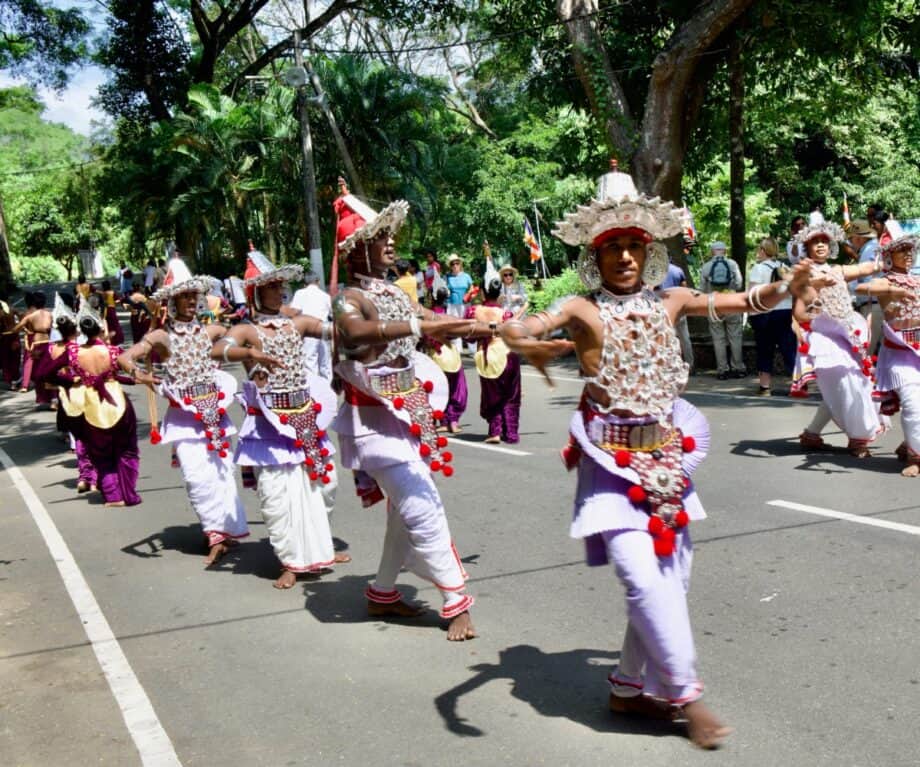
My journey to each of these places was also a new experience including the sight of wild elephants ambling along the road, seen on my way to Hiriwadunna Village.
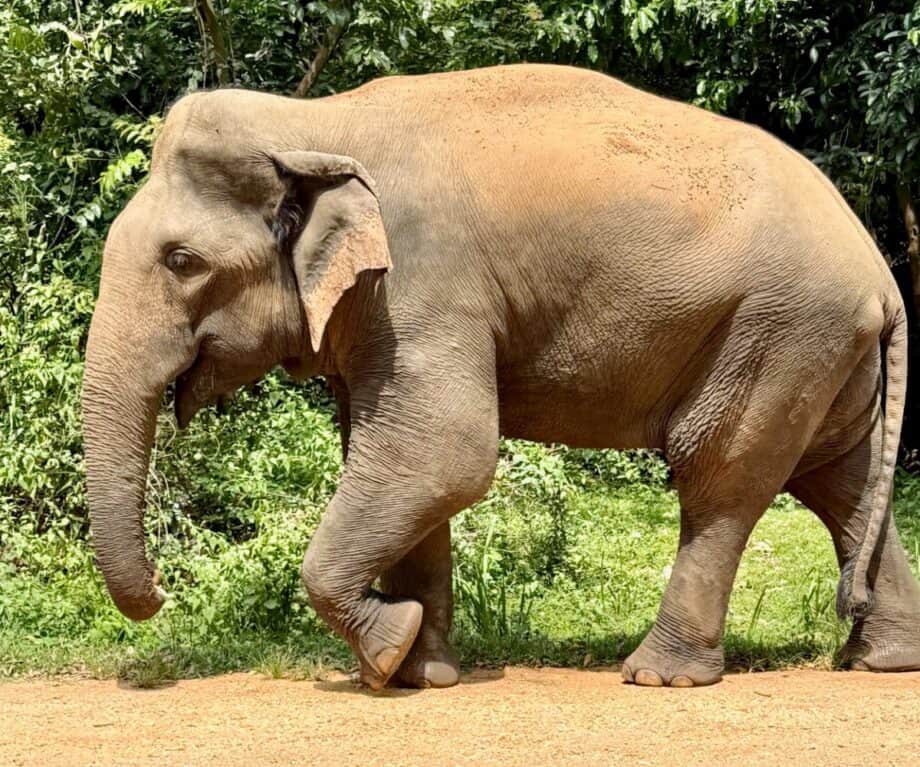
The small rural village of Hiriwadunna is located on the banks of the Hiriwadunna Lake near the town of Habarana in the North Central Province of Sri Lanka. After leaving my comfortable air-conditioned coach I walked down a track to a small clearing where my next mode of transport was waiting, a wooden bullock cart. I clambered aboard and we were soon bumping and swaying along a rough muddy track. The startling green of paddy fields lay on one side of me while the other side was forested.
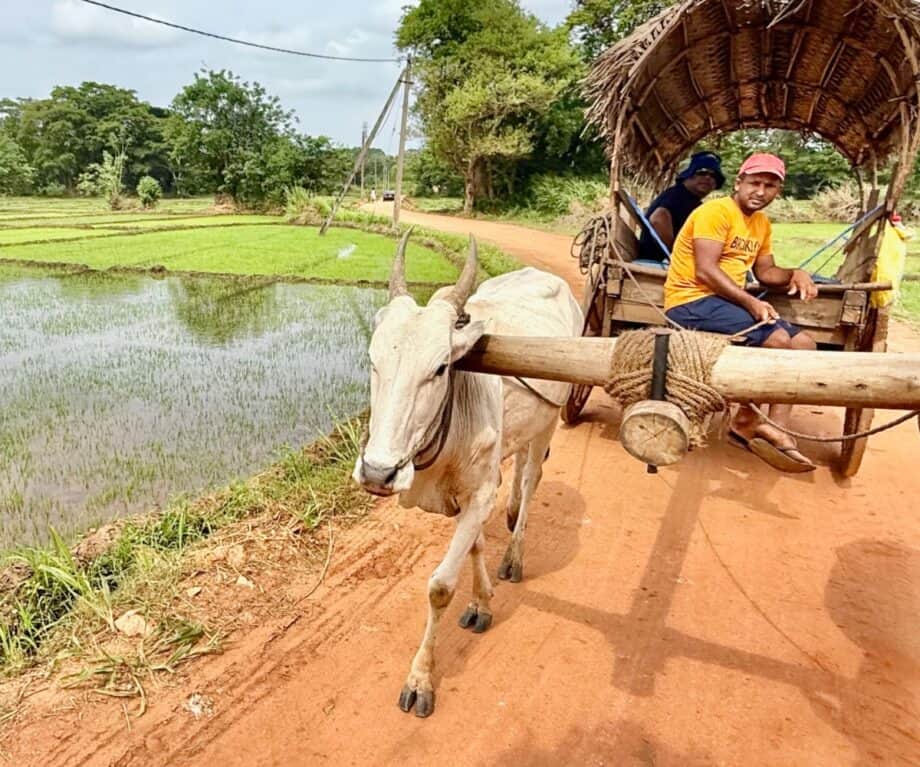
It was not long before we stopped and encouraged to dismount and follow our guides down a narrow path skirting the lake. It was a bit tricky conquering the quivering wooden jetty and creating the right balance of bodies in the catamaran-style canoes waiting to take us on a boat trip. However, we were soon gliding across the still waters sprinkled with water lily blossoms. I was soon to discover some amazing accessories that can be created from a lotus flower including a necklace and a hat.
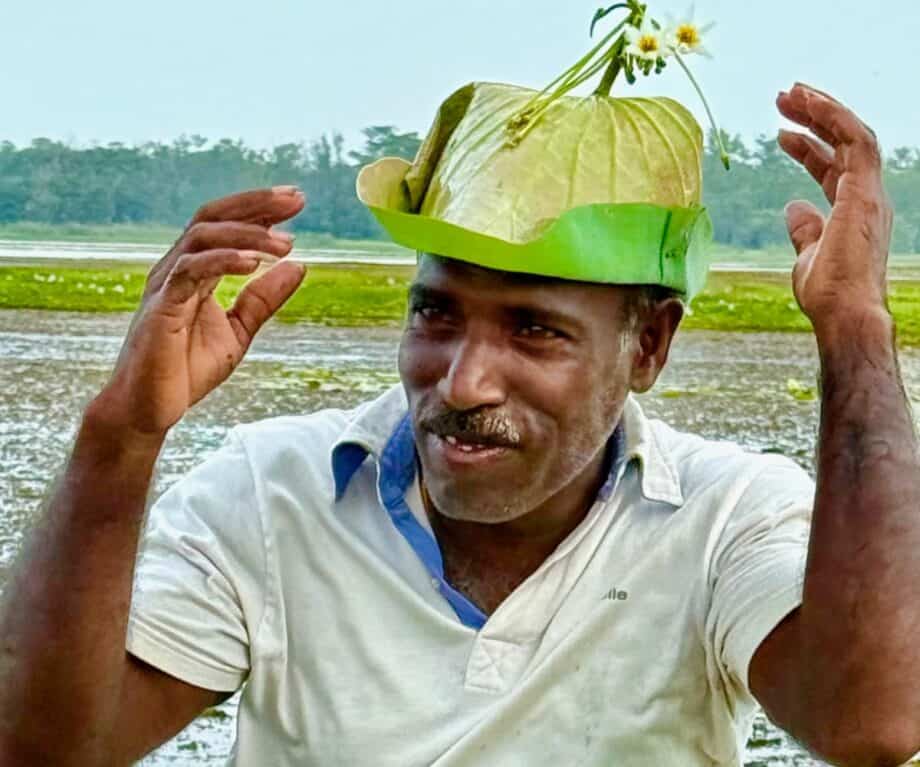
Our boat trip ended on the far side of the lake where we were treated to a home-cooked Sri Lankan lunch and a demonstration of how to make a coconut sambal to accompany a delicious lunch. After paddling back across the lake our fourth from of transport that day, the ubiquitous tuk tuk whisked me back to my coach where driver and apprentice greeted me with a sunny smile and a bottle of very welcome cold water. My second village visit was a complete contrast and involved a fascinating four by four ride through Sri Lanka’s hill country in the Central Province.
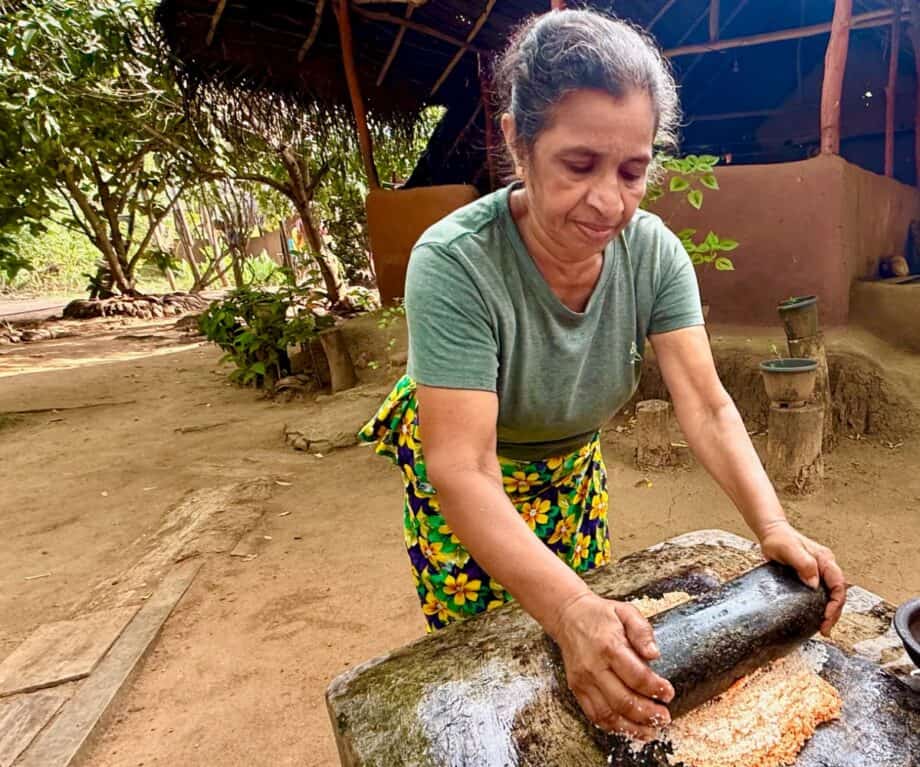
Winding up the road through verdant tea plants the temptation to request a photo stop was irresistible. Genuine tea pluckers grinned at me as I snapped treasured images of them. These were not glamorous young women in silk saris but workers from the village of Kandapola, near Nuwara Eliya, that I could see below me. A large Hindu temple, built by the community, forms a colourful centrepiece.
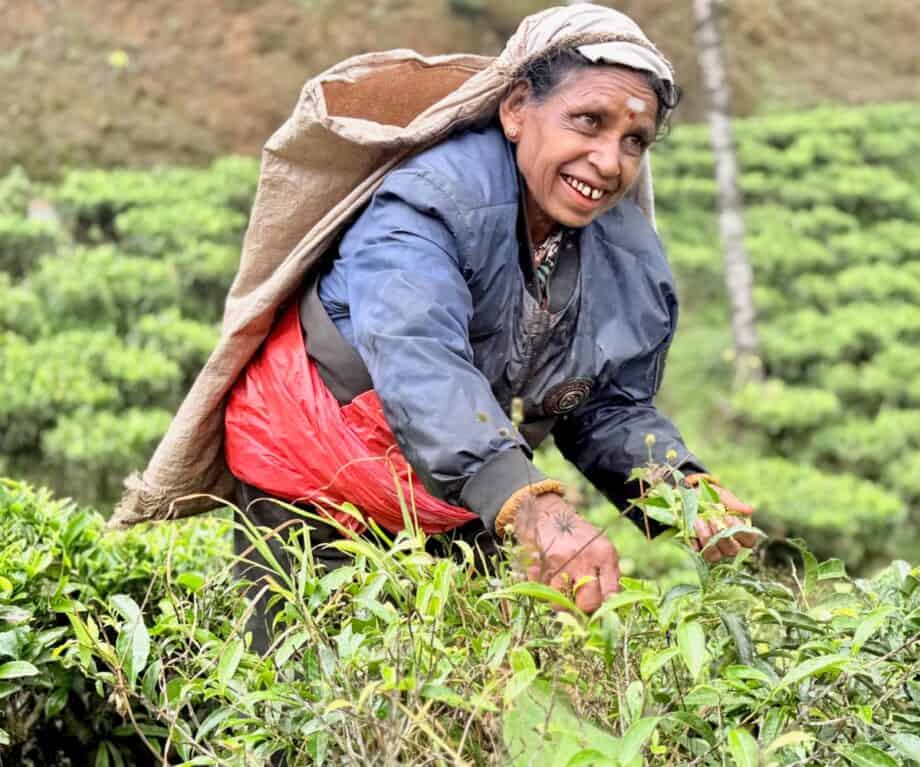
When I arrived in the village, I met one of its leading residents, Suresh, whose house I would be visiting after a short tour of the village. Tamils form the majority of a total population of one thousand but there are also people from Southern India. The old traditions are treasured here including the creation of the mandala. After the traditional Hindu greeting from Priya, wife of Suresh, I was shown how to create a mandala using rice powder to draw the outline (kolam) and coloured rice to ‘paint’ it. The mandala is symbolic in Hindu and Buddhist cultures and usually features a geometric design but, on this occasion, I was invited to assist in the creation of a multi-hued peacock.
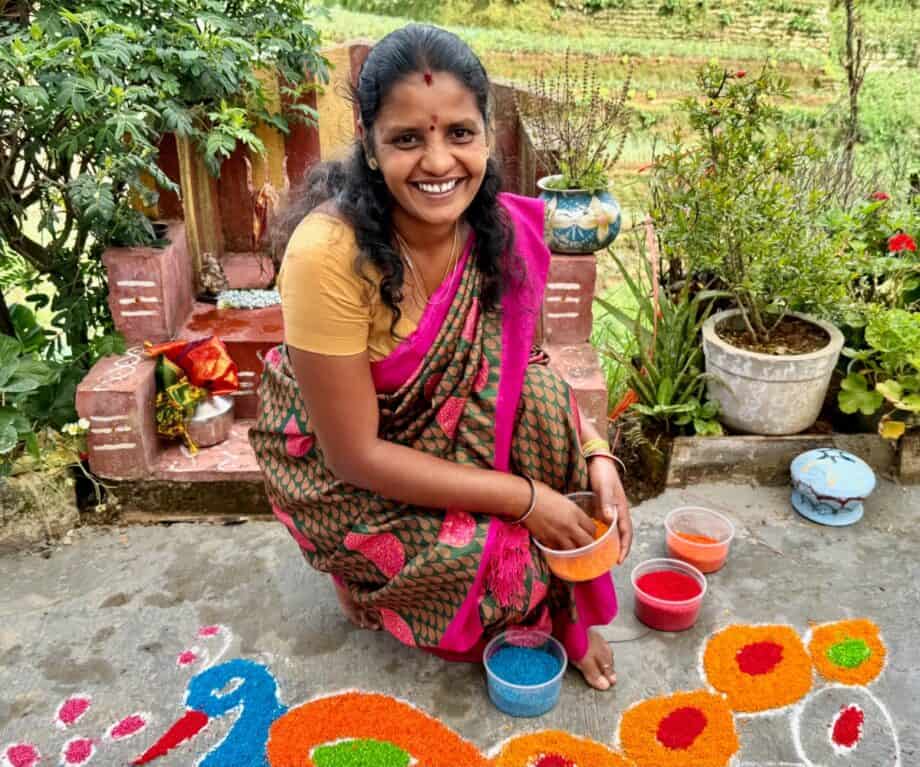
After being dressed in beautiful patterned saris (the women) and white vetti (the men) we posed for a fashion shoot. By this time the primitive stove had been fired up and some traditional snacks were being prepared. Banana leaves were distributed to be used as plates as we tucked into the freshly cooked idly (savoury rice cake) and ulundu vadai (like a crispy doughnut). As I munched my treats, I could see men working in the terraced fields beyond the village. Each house has a field for the cultivation of a variety of crops including leeks, potatoes, bananas and carrots. At harvest time local buyers will be contacted and the crops sold to those that make the best offer and will then come and collect them. As I discovered during this village Sri Lanka is keen to preserve its traditions and dancing is one of them. I attended a dance school to learn more about this tradition.
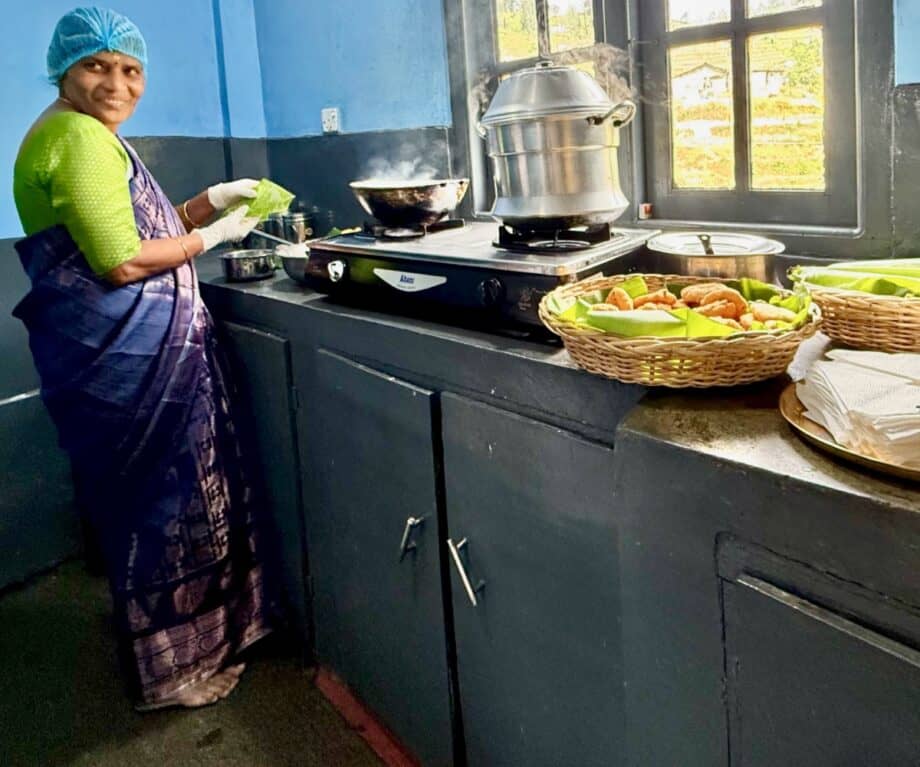
At the Janaka Prasantha Dance School in Kandy the clamour of a dance class outside distracted me from the comprehensive presentation relating to the history of dance in Sri Lanka. I excused myself and crept outside. A very well-disciplined group of children from tots to teenagers was going through a series of exercises linked to the dance routines they would learn/practice later. I grinned under the curious gaze of the participants and was rewarded with radiant smiles and muffled giggles. It was fascinating to watch the attention to detail regarding the precise placing of hands and feet. The children were learning set pieces that would then be stringed together to create a whole dance routine – as long or as short as desired.
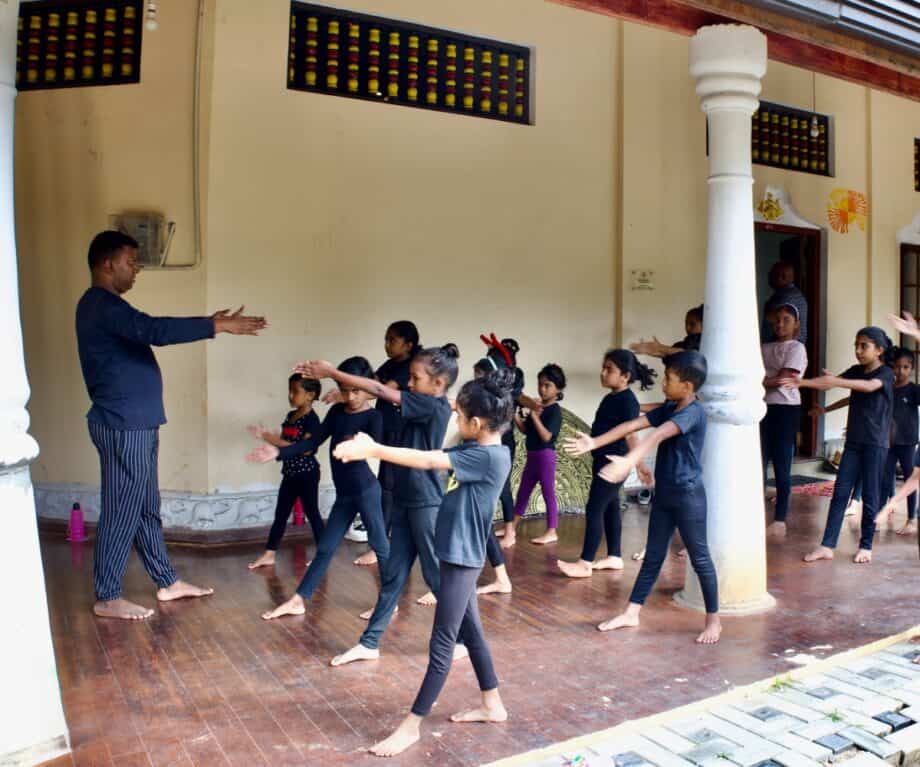
The culmination of the presentation was series of dances featuring drummers (also made and taught here) and experienced dancers in fabulous costumes. Danuka Ariyawansa was the main dancer and I was able to discover more about the school from him. Danuka works for Emirates Airline as cabin crew but takes part in demonstrations and dance performances as often as he can. Prior to COVID attendance at this school was free but now parents who can afford to make a donation are requested to do so. The school does get a grant from the government but not nearly enough to keep them going. The passion and excitement of the dancing was a strong contrast to my spiritual experience in the cave temple at Rideegama.
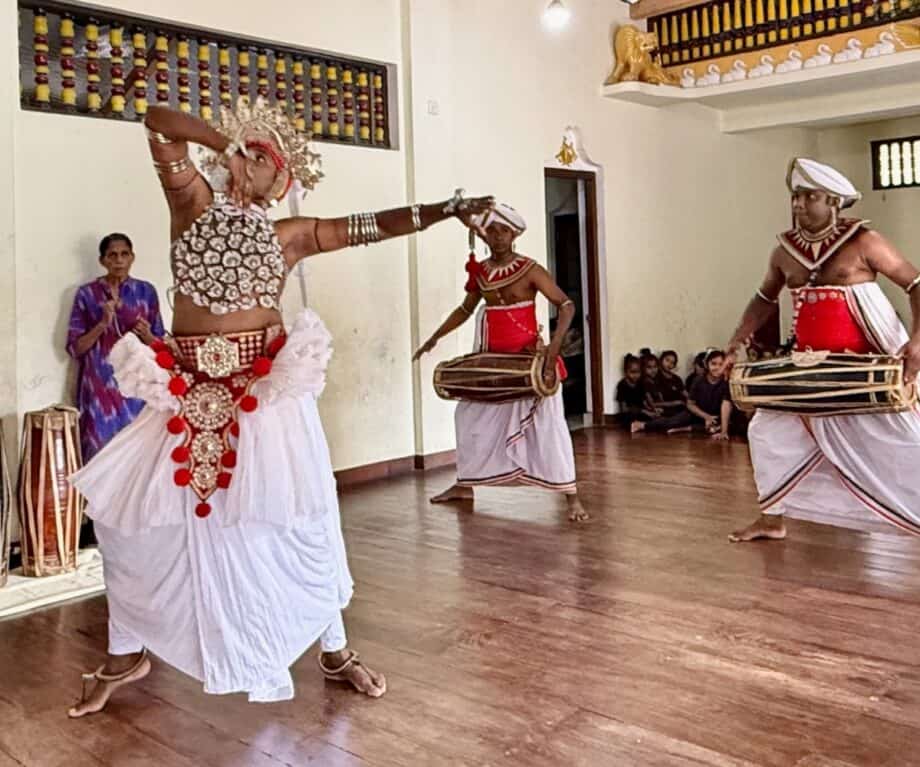
Rideegama, a designated Spiritual Destination is near Dambulla in the Central Province of Sri Lanka. The extensive grounds of this religious complex include the ancient Silver Temple (Ridi Viharaya) a Buddhist temple built on a hill riddled with caves and a temple inside a cave. It is not an easy walk between the two but I was not deterred by the steep descent and uneven steps. Once in the cave temple (equipped with comfy cushions) we were introduced to some simple meditation techniques by a Priest. A calming experience after the heart-thumping scramble to get down there and one I did find useful later to avert travel-related stress.
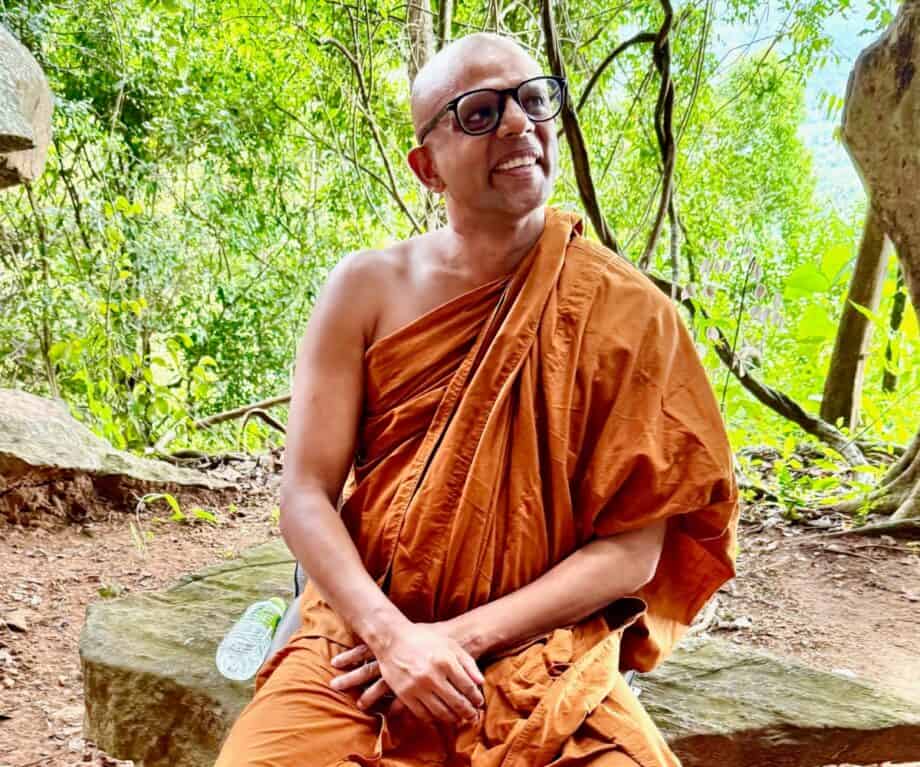
I enjoyed the climb back to the top and a gentle stroll around the temple complex in my bare feet. It includes a small, stone Hindu temple and a Chanting Hall as well as a tribe of inquisitive monkeys. There are also some stunning paintings around a reclining Buddha in the small, elevated hall at the side of the main temple. What a contrast from the simplicity of the cave temple we had visited earlier. Everywhere I went I experienced the legendary hospitality of the Sri Lankans including the hotels where I stayed. My enquiries regarding sustainability (a particular interest of mine) led to an individual tour of the vegetable garden at the Jetwing St Andrews.
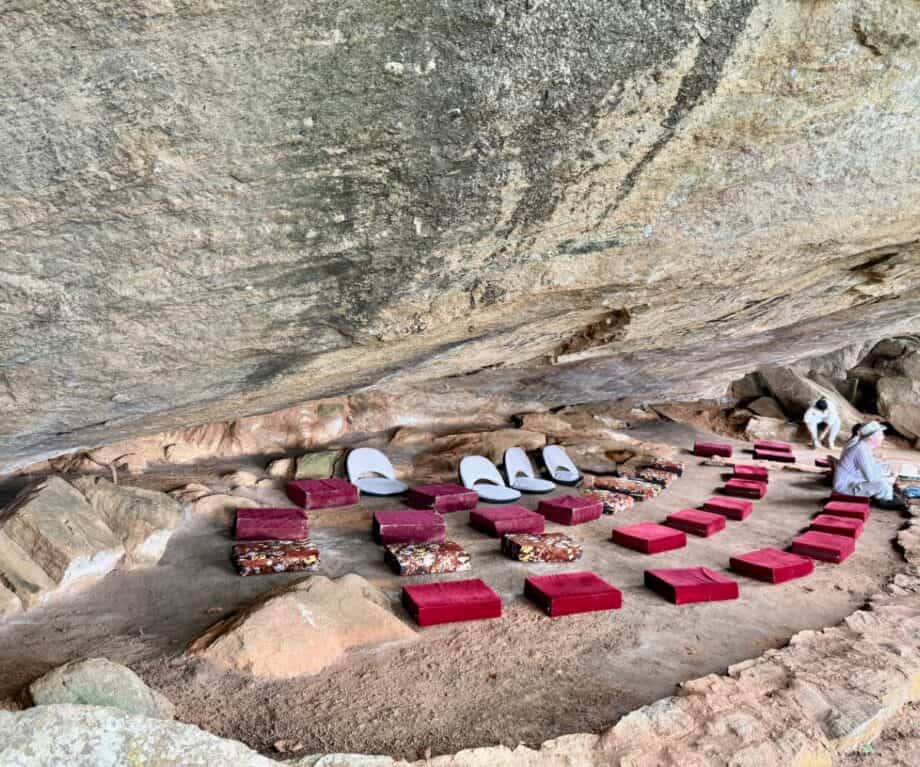
Jetwing hotels pride themselves on their excellent Sri Lankan hospitality, a legacy of their founder Herbert Cooray. He was also a pioneer of conservation, one of the first to recognise the growing importance of this aspect of tourism. I experienced both qualities here. A highlight of my visit was a tour of the hotel’s vegetable garden – the hotels main source of vegetables. Gowry, the Hospitality manager, was my delightful companion. She led me through the beautiful formal gardens to a large vegetable garden. We wandered between regimented rows of cabbages, crushed leaves of herbs to enjoy the aromas and watched used water surging through the re-cycling tanks. It felt good to know I was staying in a conservation conscious hotel.
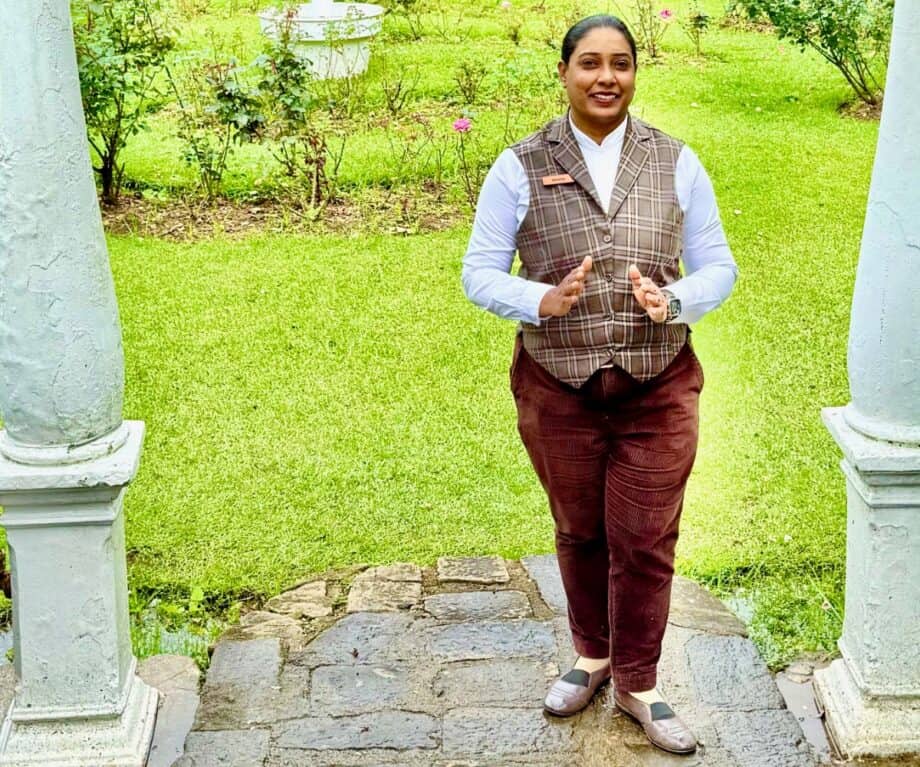
Sri Lanka is a country of colour and contrasts but a constant is the cordial greeting from its people and the smile that lights up their faces. And that is what made my visit so memorable.
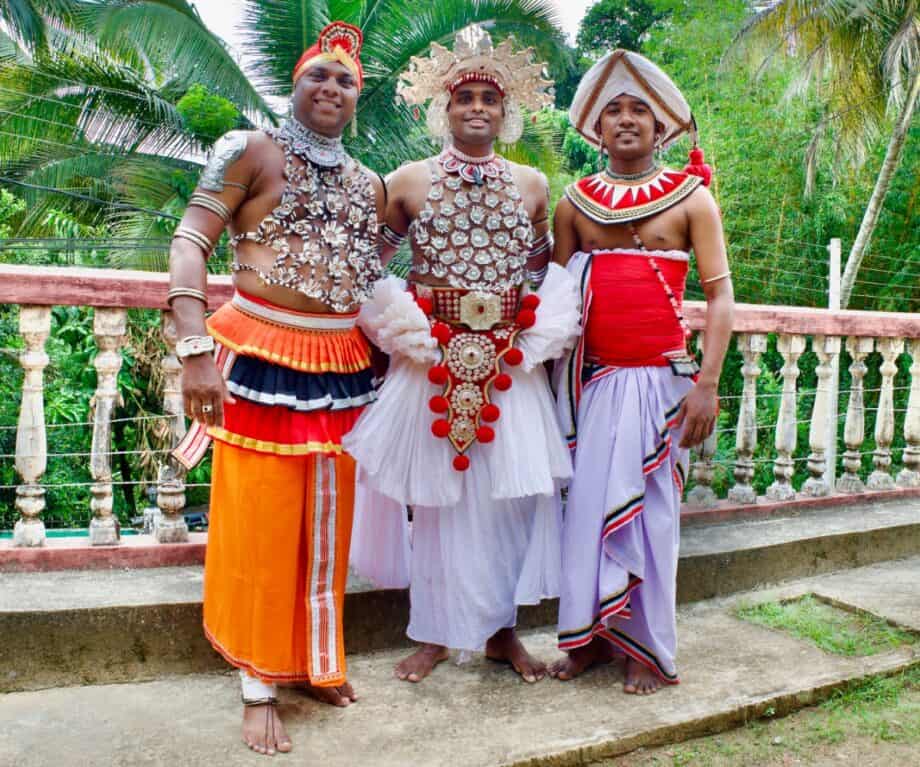
aluxurytravelblog

